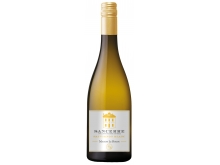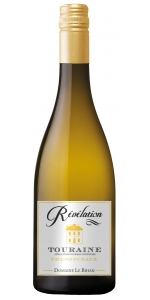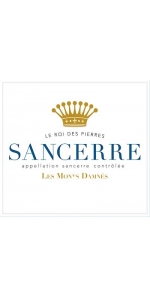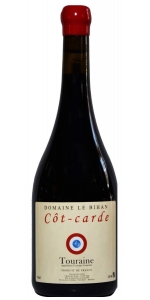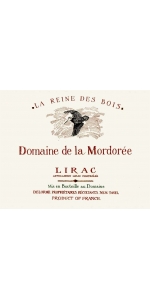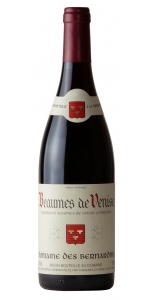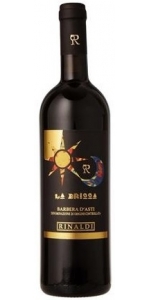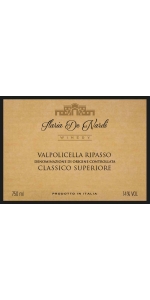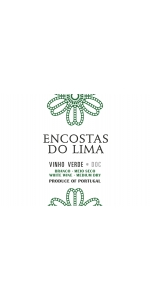Maison le Bihan Le Sancerre Blanc 2021
| Country: | France |
| Regions: | Loire Sancerre |
| Winery: | Maison Le Bihan |
| Grape Type: | Sauvignon Blanc |
| Organic: | Yes |
| Vintage: | 2021 |
| Bottle Size: | 750 ml |
Bihan Le Sancerre Blanc 2023 is made from 100 percent Sauvignon Blanc.
Pale, lemon green color, with pronounced citrus intensity. The nose is dominated by lychee, grapefruit and peach aromas; rich and well-rounded in the mouth, showing a pleasant acidity length.
Traditional, in stainless steel tanks. Bladder press grape pressing and reception of the must in the tanks by gravity. Settling of the must 24-36 hours before fermentation. Slow alcoholic fermentation only is done, in order to preserve the aromatic qualities. A racking is done over 3 months later. Clarification and light filtration before bottling at the estate.
To drink as an Aperitif or with food, such as white meat, seafood, crottin de Chavignol goat cheese.
Le Bihan Touraine Chenonceaux Sauvignon Blanc is made from 100 percent Sauvignon Blanc.
Olfactory aspect : Limpid and brilliant with a pale gold
Nose: pronounced white floral bouquet
Palate : Dry, harmonious tangy edge with a lively finish
Grapes for the Le Bihan Touraine Chenonceaux Sauvignon Blanc was grown on hillside allowing perfect ripeness, maturity and freshness.
Wine was aged on the fine lees for 9 months in vats (no Oak).
To drink on Aperitif, with white meat, Loire asparagus and seafood.
Super-concentrated and mineral. Release always trails the regular Sancerre Blanc by a year so it has extra time in both tank and bottle.
An understated charm on the nose, revealing elegant aromas of yellow fruits like apricot and mirabelle plum, along with hints of anise and marzipan. A touch of green pepper adds a light and airy quality. On the palate, it offers a crisp and delightful experience, with flavors of plum and orange wedge, culminating in a chalky, saline finish.
VINEYARDS: The vineyards are planted in Terroir of Kimmeridgian marls (calcareous clay with encrustation of oyster and mussel fossils) from the Jurassic time. Trellised vines are averaged around 30 years old and have a planting density of 8000 vines/ha. Tillage takes place in the rows until the bud burst, the rest of the year to natural grass covers. The Côte des Monts Damnés is located in Chavignol. Steep hillsides (declivity up to 70%), facing south, with an altitude that ranges from 650 to 980 feet.
VINTAGE: The grapes matured in cooler temperatures than in recent years, so the 2021 vintage is in line with other vintages that conform to the temperate climate of the Centre-Loire wine region.
VINIFICATION AND MATURATION: The grapes were handpicked and had a light cold static settling to eliminate the coarsest lees. Fermentation and aging took place in stainless steel tanks (88%) and 10 years old wooden vats (12%). After, the wine was aged on fine fermentation lees for 9 months.
Le Bihan Touraine Chenonceaux Sauvignon Blanc is made from 100 percent Sauvignon Blanc.
Touraine Chenonceaux "Revelation" is a limpid and brilliant colored wine with pale gold highlights. The nose is intense and expressive, full of floral aromas. It is dry and harmonious on the palate, with a tangy edge and a lively finish.
To drink as Aperitif, or with white meat, Loire asparagus and seafood.
Le Bihan Touraine Rouge Cot-Carde is made from 100% Cot (same as Malbec).
Purple red color.
The nose is open and offers a cocktail of red fruits.
The mouth is mineral and fine.
This wine offers an alliance between woody notes and black fruit.
Pair with simmered dishes, red meats.
Bihan Le Pouilly-Fume is made from 100 percent Sauvignon Blanc.
Its aromas: white flowers (hawthorn and acacia flowers), followed by hints of black current buds, pineapple, apricot or white peaches, depending on the year, with clear mineral notes in the finish. After a couple of years, aromas often evolve to quince and mango. On the palate, it is virile, powerful and long lasting. This Pouilly Fumé is for wine lovers who appreciate full, rich and generous wines.
Pair with seafood, lobster, fish and white meat. Goat cheese is a perfect match too!
Pale, lemon green color, with pronounced citrus intensity. The nose is dominated by lychee, grapefruit and peach aromas; rich and well-rounded in the mouth, showing a pleasant acidity length.
Traditional, in stainless steel tanks. Bladder press grape pressing and reception of the must in the tanks by gravity. Settling of the must 24-36 hours before fermentation. Slow alcoholic fermentation only is done, in order to preserve the aromatic qualities. A racking is done over 3 months later. Clarification and light filtration before bottling at the estate.
To drink as an Aperitif or with food, such as white meat, seafood, crottin de Chavignol goat cheese.
Maison Le Bihan is located in the Loire Valley in a small village called Angé (not to be confused with Angers).
Laurent is the 3rd generation winemaker and his son Romain will be the 4th generation.
Super-concentrated and mineral. Release always trails the regular Sancerre Blanc by a year so it has extra time in both tank and bottle.
An understated charm on the nose, revealing elegant aromas of yellow fruits like apricot and mirabelle plum, along with hints of anise and marzipan. A touch of green pepper adds a light and airy quality. On the palate, it offers a crisp and delightful experience, with flavors of plum and orange wedge, culminating in a chalky, saline finish.
VINEYARDS: The vineyards are planted in Terroir of Kimmeridgian marls (calcareous clay with encrustation of oyster and mussel fossils) from the Jurassic time. Trellised vines are averaged around 30 years old and have a planting density of 8000 vines/ha. Tillage takes place in the rows until the bud burst, the rest of the year to natural grass covers. The Côte des Monts Damnés is located in Chavignol. Steep hillsides (declivity up to 70%), facing south, with an altitude that ranges from 650 to 980 feet.
VINTAGE: The grapes matured in cooler temperatures than in recent years, so the 2021 vintage is in line with other vintages that conform to the temperate climate of the Centre-Loire wine region.
VINIFICATION AND MATURATION: The grapes were handpicked and had a light cold static settling to eliminate the coarsest lees. Fermentation and aging took place in stainless steel tanks (88%) and 10 years old wooden vats (12%). After, the wine was aged on fine fermentation lees for 9 months.
Mordoree Lirac Rouge Reine des Bois equal parts Grenache, Syrah and Mourvedre
Color : deep dark red, with blueish hints.
Aromas : highly fruity ( raspberry, billberry, blackberry ), floral (violet) and intense with a grilled touch ( coffee ).
Palate : melted and concentrated tannins, full bodied, very long fresh finish.
Ageing potential : 8 to 10 years
Grilled meats, sauce meats, game birds, game rabbits and semi-mature cheeses.
"Blackberries, dark berries, dried thyme and sweet spices on the nose follow through to a medium body with fine tannins. Round, fruity and juicy with a transparent character. Precise and well-balanced with a flavorful finish. From biodynamically grown grapes with Demeter certification. Drink or hold.."
- James Suckling (June 2023), 91 pts
Bernardins Beaumes de Venise Rouge Cru Cotes du Rhone is made from 65% Grenache, 25% Syrah, 5% Mourvedre and 5% Grenache Blanc.
Bright ruby color with cherry tinges. Complex black fruit aromas on the nose enhanced by spicy notes. Rounded palate with good length.
The wine is drinking well right now and can be kept for another 10 years.
Situation
Spreads out over the south-east side of the Dentelles de Montmirail hills, in Beaumes de Venise in the southern part of the Rhone valley.
Terroir
On a poor sandy, hungry and arid soil consisting of tender limestone and gritty zones of sandy mollasse.
In the vineyard
The vineyards and their terroir are the essence of our wines. This is where everything starts and where we focus our efforts throughout the year. You can’t make great wine without great grapes.
The viticulture is essentially done by hand. Five people work full-time in the vineyards. They are supplemented by seasonal employees who work during bunch thinning and the harvest in order to bring out the very best in our vines. Working by hand and the attention each vine gets are fundamental. Pruning, de-budding, trellising, leaf removal and picking are thus carried out by hand with the utmost care.
We prepare the soil by using good old-fashioned ploughing. Organic compost is made from grape marc (the discarded stalks and skins).
As a way of protecting the plants, we only use phytosanitary products when necessary and within strict guidelines by staggering the treatments appropriately, to minimise the amount of chemicals used. We prefer to use as much as possible manual and organic techniques . Leaving natural grass cover, removing buds and leaves from the vines, preserving biodiversity around the vineyard: olive, almond and cypress trees, wild rosemary and capers.
Winemaking
We make two red wines at the estate. Terroir wines shaped by the two classic Côtes du Rhône varieties: Grenache and Syrah. We don’t follow any winemaking recipe but are constantly searching for the perfect expression of terroir and each vintage’s particular characteristics. We don’t go for overripe grapes and over-extraction, as we think the wine has to stay refreshing and balanced.
Leaving the wine for 15 days in concrete vats, we try to gently extract the tannins and anthocyanins essential for the wine’s structure and colour. The wine doesn’t come into any contact with wood during ageing. This way the characteristics of our terroir can fully express
Serve with a meal especially red meat, game and cheese.
Rinaldi Barbera d' Asti La Bricca is made from 100% Barbera d'Asti.
"Bricca" means the top part of the hill. (see picture of the vineyards)
La Bricca is a deep, ruby-red colored wine with violet hues. The bouquet is vinous and intense with ethereal aromas (typical of the Barbera grape) and scents of ripe fruit and spices. The wine is full-bodied with very pleasant silky tannins. Long and harmonious with a good aging potential.
Enjoy it with meat dishes, rich pasta, risotto and well-aged cheeses. To appreciate the wine at its best, the bottle should be left at least 24 hours at room temperature and opened 1 hour before serving.
Ilaria De Nardi Valpolicella Ripasso Classico Superiore is made from 60% Corvina, 20% Rondinella, 20% Corvinoni
Intense red color with garnet hints. Almond and fresh walnut aromas. Full-bodied with a good structure.
This is an excellent red wine with a supple body. The techniques used to produce this wine is typical from the area.
Excellent with cold cut, fresh and mature cheeses. Perfect with red meat and game.
Late harvest style Corvina aged on Amarone lees. The must of Amarone remains in the vat and instead of being pressed, it is topped up with high quality Valpolicella before being left to referment for about 10-15 days.
Pairs well with roasted meats.
Lima Adega Vinho Verde is made from 80% Loureiro and 20% Trajadura
All Vinho Verde (or green wines – meaning young, not green in flavor) are the best in the first 18 months. The wine is fresh, crisp, lively with a touch of spritz. It has some very interesting aromas of stone fruit and lime.
Portuguese Vinho Verde with a screwcap!
Loureiro: Loureiro is a white vine variety grown in the northern region of Portugal that produces an aromatic bay leaf scent. The pale-skinned variety is used to make the Vinho Verde white wine that of the Minho region.Traditionally, Vinho Verde wines include Trajadura and Pederna, but varietal Loureiro wines are becoming increasingly popular. The Loureiro variety is also grown in smaller batches in Galicia, which sits to the north of border of Spain. Loureiro variety grapes are high in acid and is sometimes called "Branco", "Marques", or "Redondo". In this region, the variety is used to create the Rias Baixas white wine, and is typically blended with the variety, Albarino. The wine works perfectly with fish, grilled good, sushi, shellfish, salads or fruits. The wine also pairs nicely with clams and white wine or fresh spring rolls. The variety is high in acidity and is typically bottled with a shot of carbon dioxide to maintain the quality of the wine and to give it a nice, bubbly texture. The taste of the wine includes aromas of citrus, tropical fruits and a mineral tone, and also has hints of floral aromas.
Trajadura: Trajadura is a white grape varietal also known as Treixadura. Trajadura originates from Portugal, particularly the Northern region. Trajadura is most famously used in Portugal's Vinho Verde wine, but Trajadura is also utilized in blends to add fullness and brisk citrus flavor. The low acid content in Trajadura, combined with a higher alcohol content make it an ideal and rare blending component in this particular climate region. When Trajadura is blended with Loureiro and Albarino it is the perfect balance for Vinho Verde. In Spain, Trajadura is called Treixadura and is most commonly found n Rias Baixas and Ribeiro. Spain also takes advantage of the blending characteristics while combining with Albarino, Abillo, Lado, Macabeo, Godello, and Torrontes. The Trajadura vines are recognized by average sized bunches that are dense with moderately sized berries. Trajadura ripens early, so to keep the acidity, it must be harvested rather early. The flavor profile for Trajadura will consist of apricot, peach, apple, lemon, and pear.
With low alcohol, it is best as an aperitif or with seafood. Definitely a summer drink.
- back
Bressia Profundo is made from 50% Malbec, 30% Cabernet Sauvignon, 10% Merlot and 10% Syrah
Profundo began during the era of “assemblages” in Argentina; wines from various grapes combined in different proportions, achieving a singular, complete wine with great definition.
The Malbec, the Cabernet Sauvignon, Merlot & Syrah come from Lujan de Cuyo vineyards 3,100 feet above sea level. Planted 6,500 plants per hectare.
Intense red color with purple tones. Delicate strawberry, blackberry aromas intertwined with chocolate, tobacco, dulce de leche and vanilla nuances. Harmonious and elegant in the mouth with a long finish.
Review:
"The 2017 Bressia Profundo is half Malbec with 30% Cabernet Sauvignon, 10% Merlot and 10% Syrah from Agrelo, Luján de Cuyo and was aged in used American and French barrels. A rich purple in color, the complex nose offers violets and white pepper with hints of ripe plum, raspberry and blackcurrant with whiffs of mint and balsam over a bed of oak. Indulgent initially, the flow grows voluminous and gentle with delicate tannins enlivened by the juicy freshness. A nuanced red of ephemeral flavor. - Joaquín Hidalgo"
- Antonio Galloni's Vinous (November 2021), 94 pts
Dark amber color. Notes of dried fruit and honey balanced with rich aromas of dried fruit and torrefaction. In the mouth, subtle flavors of crystallized fruit (cherry, dates and raisins), nuts and coffee. Elegant finish.
RS: 133g/Liter
TA: 3.3g/Liter
Pairings: Digestive: Cheeses and conventual sweets (portuguese pastries).

